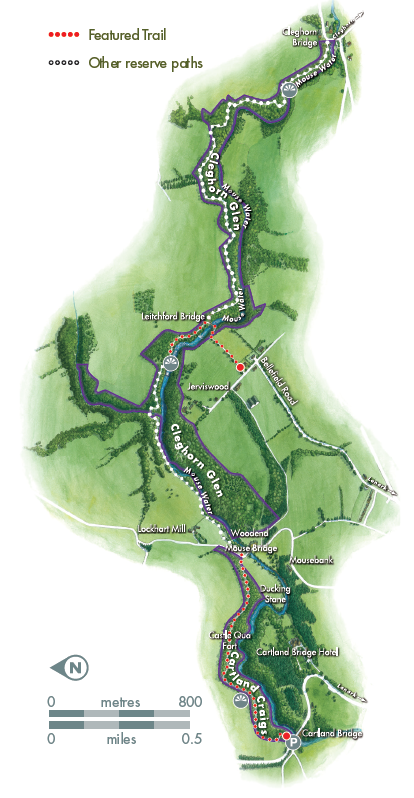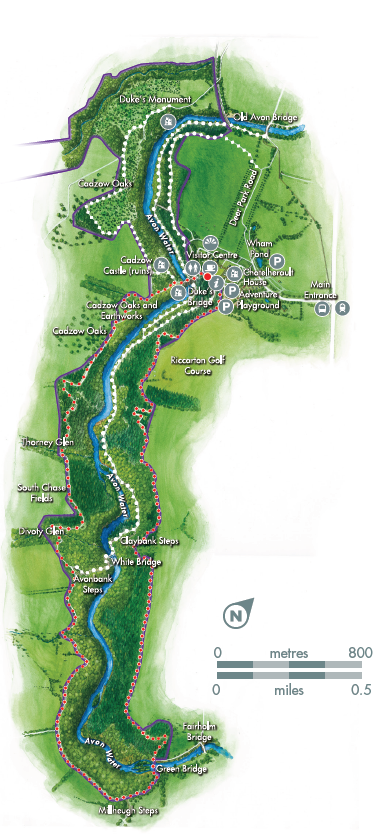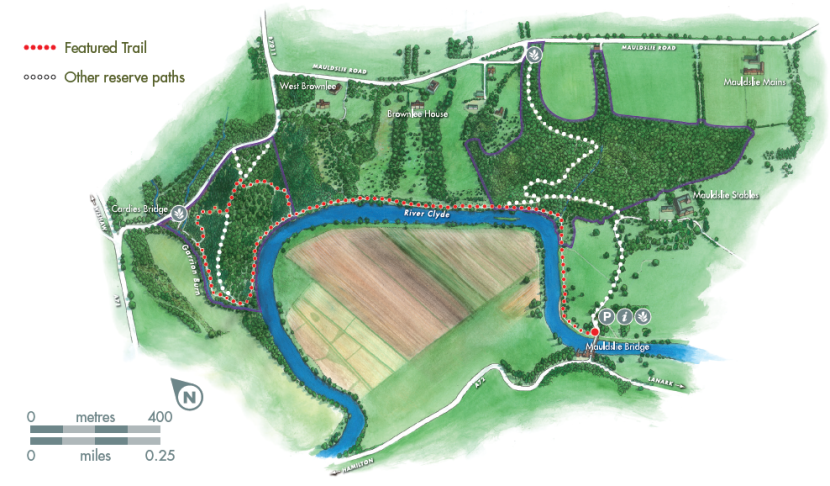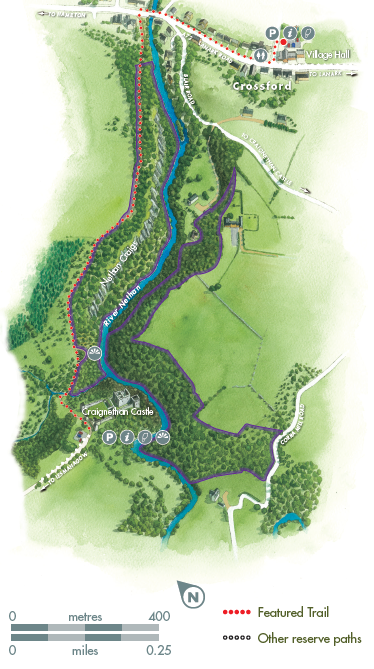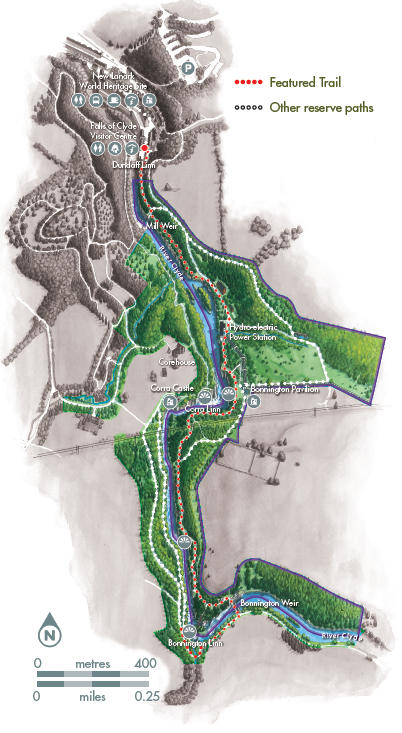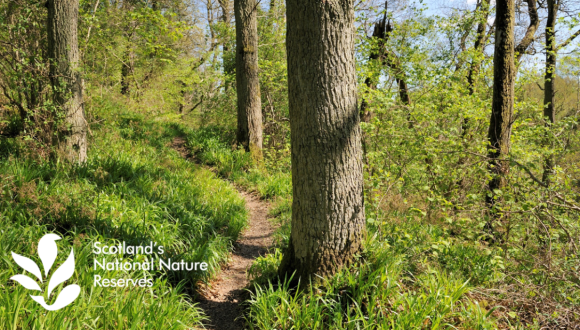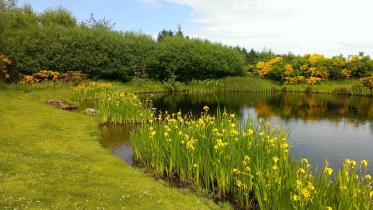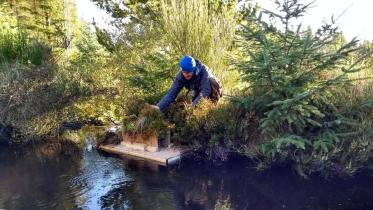Visit Clyde Valley Woodlands Trails
Welcome to the Clyde Valley Woodlands National Nature Reserve (NNR), one of the ecologically richest areas of Scotland. This is one of the few NNRs to be located so close to the Central Belt of Scotland and the only Scottish NNR to consist of six individual woodlands; each one occupying its own dramatic river gorge. These internationally protected woodlands are an important backdrop to local people’s lives. This is a managed ‘living’ landscape where local communities live close to their woodlands and have forged close cultural ties with these sites.
The woodlands are often hidden in dramatic river gorges, carved by the waters of the Clyde, the Avon, the Mouse and the Nethan. Here, wildlife thrives in these ribbons of ‘wild land’ that lace the Lanarkshire landscape. These valleys are too steep to farm or build on and so the soil has remained undisturbed for centuries, resulting in some of Scotland’s most biodiverse habitats. The rich soils give life to the towering oaks that reach across these gorges.
Explore the many paths through these spectacular ancient woodlands, or better still, find a quiet spot and sit awhile; it’s always best to simply let the wildlife come to you. If you’re quiet, with luck you may see badgers, roe deer, otters, great spotted woodpeckers, kingfishers, peregrine falcons, dippers and much more. The Clyde Valley Woodlands NNR is jointly managed by NatureScot, the Scottish Wildlife Trust and South Lanarkshire Council.
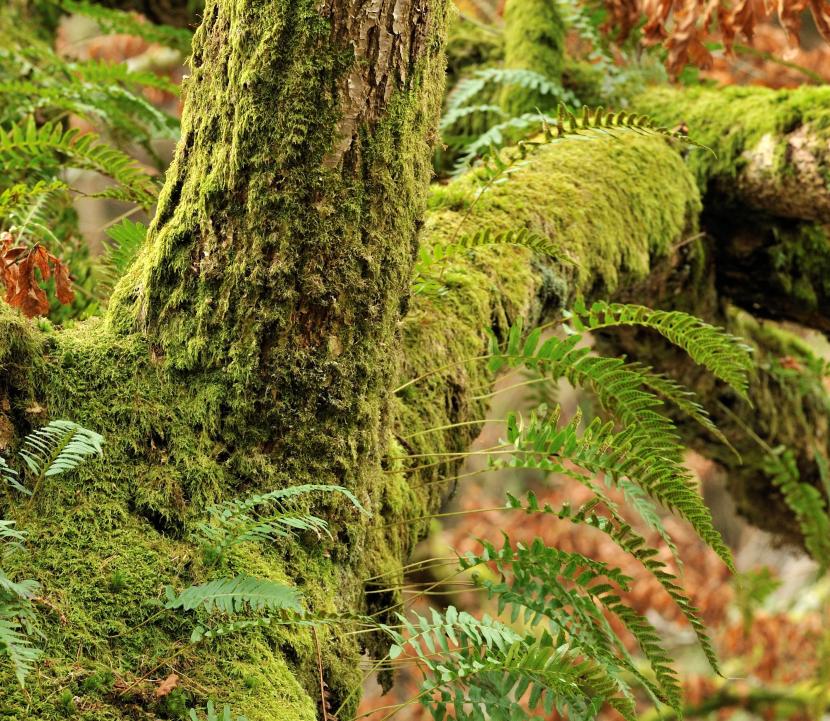
General Information
All of the walks are located in gorge woodlands and there are steep slopes, unfenced cliffs and deep rivers at all the sites. Therefore, visitors should take great care and keep children and dogs under close control at all times.
Most trails are easy to follow, but can be muddy in places after wet weather. Remove all dog waste and take your litter home.
Some of these paths are narrow, with fragile easily damaged surfaces and frequent pedestrian use – mountain bikers are asked to behave responsibly and avoid using paths where that is the case.
The Falls of Clyde and Chatelherault are popular visitor attractions, with cafes, toilets and ample parking. Additionally, there are places to eat and public toilets in Lanark, close to Cartland Craigs and Cleghorn Glen, and in Crossford, near Nethan Gorge.
More information
- Cartland Craigs & Cleghorn Glen are managed by NatureScot – for more information call 01738 457037 or visit nature.scot
- Falls of Clyde and Nethan Gorge are managed by The Scottish Wildlife Trust – for more information call 01555 665262 or visit scottishwildlifetrust.org.uk
- Chatelherault and Mauldslie Woods are managed by South Lanarkshire Council – for more information call 01698 426213 or visit southlanarkshire.gov.uk. Follow @ScotlandsNNRs on social media.
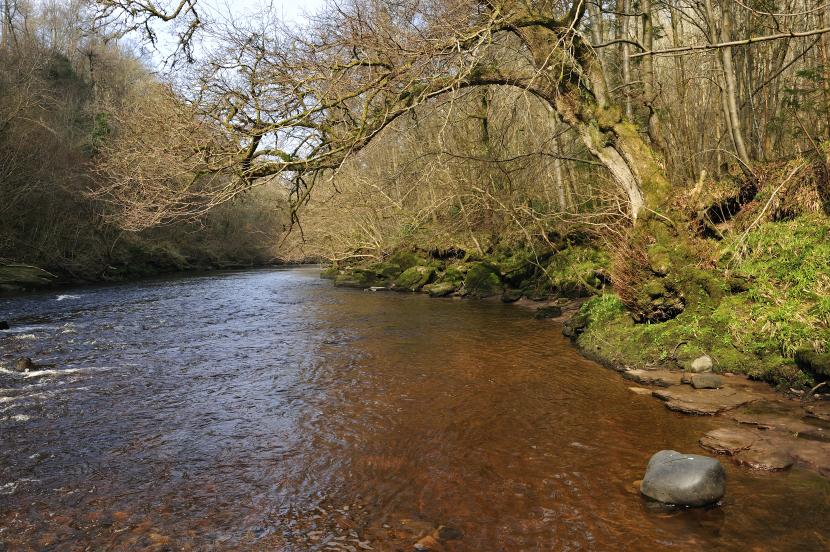
Walk A - Cleghorn Glen - 1 hour/1.5km
Ideally, the best way to savour the hidden gems of Cleghorn Glen is to walk the entire gorge from Cleghorn Bridge to Mouse Bridge (4km). However, parking can be difficult at these locations so here we suggest a shorter walk to offer a taste of this wonderful oak and ash woodland. Starting at the Cleghorn Glen sign near to the end of Bellefield Road, follow a lane between fields to enter the National Nature Reserve at Leitchford Bridge.
The path can be followed either up or downstream at this point. However, for this short excursion to the ‘Mouse Falls’, we recommend that you turn left (downstream) to follow the water’s edge along a narrow path with unexpected views of the increasingly dramatic and rocky Mouse Water as it cascades down to the rapids below (take care as there are steep, unfenced drops to the river in places). Look out for wild garlic, wood anemones and roe deer and the towering oaks, drawn tall and straight by the light high above the narrowing gorge.
After 400m you will reach the ‘Mouse Falls’ where the water crashes over a series of rocky steps, especially following heavy rain, spraying a thunderous noise in perfect contrast with the stillness of the woodland. Here, there is a more open space where you can sit and enjoy the dramatic scene; a true hidden gem.
Walk B Cartland Craigs 1.5 hours/2.5km
Cartland Craigs is one of the most dramatic of the Clyde Valley’s wooded gorges. The best starting point is the small car park on the north-west side of the spectacular Cartland Bridge (take care when entering and leaving the car park as it is close to a tight bend). Walk steeply uphill for 250m with the Mouse Water tumbling away to your right in the depths of the gorge. Be sure to take a look over your shoulder to glimpse one of the most dramatic views in Lanarkshire which reveals the true scale of this often hidden landscape. You are now standing high above the grandeur of Thomas Telford’s Cartland Bridge, which itself towers above the burn far below. The three-span bridge was built in 1822 and is one of the highest bridges in Scotland.
As you continue walking you will pass ancient oaks and great carpets of woodland flowers (spring/early summer). If you are lucky, badgers and great spotted woodpeckers may also be seen. Towards the end of the walk, you will pass the medieval earthworks of Castle Qua balanced on the very edge of the precipitous gorge. To return, retrace your steps; or continue north-east to reach Cleghorn Glen (follow the riverside path for 600m)
Walk C Chatelherault – Green Bridge route 2.5 hours/7.8 km
From the Visitor Centre entrance follow the road down to the Duke’s Bridge and enjoy spectacular views over the Avon Water. Carry straight on at the ruins of 16th century Cadzow Castle and follow the woodland path. After about ten minutes you will come to an open area and the edge of the medieval deer park of Cadzow Forest, laid out in the 12th century by King David I of Scotland. The magnificent, ancient oak trees here date from the mid-14th century.
Continue southwards, along the edge of the Oak Park, passing dense conifer plantations. These conifers will be felled in 2016, as part of a plan to restore this unique landscape by regenerating the ancient, native woodland that had survived intact until the 1960s.
After about three kilometres, the path descends through native woodland to a footbridge (no longer green). The ford here was known as “Mary Hosies” as Queen Mary is said to have got her stockings wet due to a litter bearer stumbling during the crossing. From the bridge, the path rises to the eastern side of the gorge from where it is a level three kilometre walk back to Chatelherault.
Walk D Mauldslie Woods 1.5 hours/3.5 km
Start at the information board on the east side of Mauldslie Bridge. Follow the Clyde Walkway downstream passing favoured fishing spots for salmon and brown trout. Here, the trail is set within the parkland setting of the former Mauldslie Castle (demolished in 1935), with many trees over 200 years old.
The wooded slope ahead is Mauldslie Woods (part of the NNR) which is now broad-leaved woodland with remnants of earlier larch and spruce plantings. Soon, the Clyde swings around to the left, before continuing downstream for another 500m. Here, the River Clyde is in a tranquil setting and kingfishers, goosanders and otters are regularly seen.
The trail rises into West Brownlee Wood before turning right to follow the Garrion Burn. This part of the NNR contains a variety of native woodland, together with young woodland developing from former orchards, and a coniferous plantation. After following the Garrion Burn for 300m, the route turns right away from the burn and climbs over the spur and returns down the slope to the River Clyde after 600m. At this point turn left and return along the Clyde Walkway to Mauldslie Bridge.
Walk E Nethan Gorge 2 hours/3km
From the car park in Crossford (behind the Village Hall), walk 400m north along the A72 which brings you over the River Nethan to the Reserve. The path runs for a short distance between the houses and river before entering the woodland and starting a steep climb up 3 flights of steps to the plateau above with open fields to your right.
Along the way, keep your eyes open for wild flowers in spring and summer, signs of badgers and listen out for woodpeckers. The path follows the edge of the woodland, dominated by oak and birch trees, and then runs between the native woodland of the Reserve and a commercial conifer plantation to your right.
Soon the path drops again and there is a viewpoint to the left that provides a spectacular view of the woodland and crags. Return to the timber steps and follow these down to the Craignethan Burn and then climb back up to the dramatic Craignethan Castle (owned by Historic Scotland and open between April and September). Return to Crossford by retracing your steps.
Walk F Falls of Clyde 3 hours/5.5km
From the New Lanark World Heritage Site, follow signs to the Falls of Clyde which bring you through two stone arches to the Wildlife Reserve above the first waterfall, Dundaff Linn. Follow the red waymarkers along the Clyde Walkway, passing New Lanark Mill weir, along a delightful boardwalk fringing the river and on past the Bonnington Hydro-electric Power Station.
A short but steep climb (with steps) brings you to the main viewpoint for the highest of the waterfalls, Corra Linn, one of Scotland’s most dramatic scenes. Continue up a short flight of steps as you traverse high above Corra Linn en route to Bonnington Linn, the furthest upstream of the Falls of Clyde. Cross the Power Station weir bridge and walk a short distance downstream to the waymarked viewpoint for the best views.
Return to New Lanark by retracing your steps along the Clyde Walkway, or for a slightly longer walk, follow the blue waymarked trail which provides good views down the Valley to New Lanark.


- National Nature Reserve
- Parking
- Toilets
- Information centre
- Viewpoint
- Information
- Paths
- Wildlife watching
- Historic structure
- Refreshments
- Ranger base
- Reserve access point
- Wildlife watching
- Bus
- Trains
